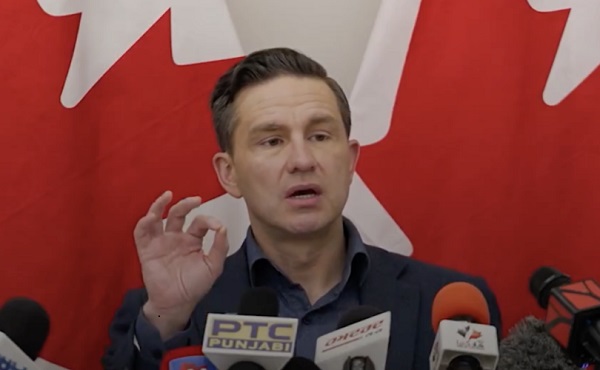Alberta
‘Coutts Two’ Verdict: Bail and Mischief
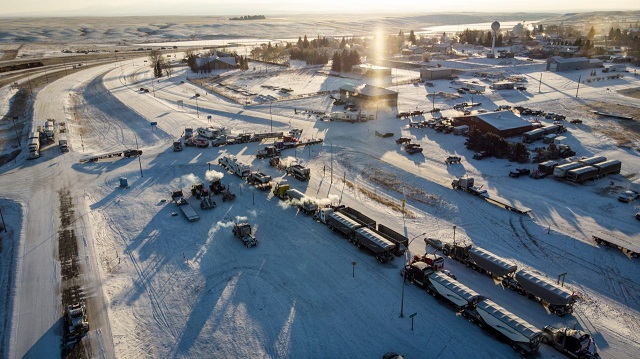
Protesters demonstrating against COVID-19 mandates and restrictions gather as a truck convoy blocks the highway at the Canada-U.S. border crossing in Coutts, Alta., on Feb. 2, 2022. The Canadian Press/Jeff McIntosh
From the Frontier Centre for Public Policy
By Ray McGinnis
Imagine spending over two years behind bars, only to be told the evidence never supported the charges against you.
On Aug. 2, a Lethbridge jury found Chris Carbert and Tony Olienick not guilty of the most serious charge of conspiracy to commit murder of police officers. However, though they were declared innocent, the conspiracy charge was the basis for their being held in remand for at least 925 days. They were denied bail based on this charge.
The sentencing hearing for other charges against Carbert and Olienick is taking place this week.
Granting Bail Typical for Serious Offences
In Canada, when someone is charged with committing a crime, they’re released on bail. This includes those charged with murder. For example, in September 2021, 31-year-old Umar Zameer was released on bail after being charged with the first-degree murder of Toronto Police Constable Jeffrey Northrup.
A case of double murder in the city of Mission in B.C.’s Fraser Valley concerned the deaths of Lisa Dudley and her boyfriend Guthrie McKay. Tom Holden, accused of first-degree murder in the case, was released on bail.
Conditions for not Granting Bail
Why do we release people from custody after being charged with a crime? Why don’t we hold people indefinitely? It’s been a Canadian tradition that there’s a process in place to which we adhere. Does the person charged with a crime seem to present a risk of repeating an offence? Carbert and Olienick hadn’t previously committed the offence(s) they were charged with. They didn’t have any criminal records for any violence. So, the likelihood of repetition of offence didn’t apply.
Another reason for denying bail is flight risk. But the Crown agreed neither of these men posed a flight risk. If you’re not clear about the identity of the person you’ve arrested, you can hold them in custody. But the Crown and the RCMP were certain of the identity of these men.
How about denying bail for evidence protection? If let go, was it possible the Crown or RCMP would lose evidence, and they needed to keep Carbert and Olienick in remand? No.
Were Carbert or Olienick considered a danger to the public? No. They had no past history of committing violent crimes, so in the case of the Coutts Two this was not a reason to deny bail.
The Crown insisted the pair be denied bail because their release would undermine confidence in the judicial system. Due to the seriousness of the offences the pair were charged with, releasing them would put the legal system into disrepute. But this is a circular argument. In authoritarian countries, police may arrest citizens on serious charges they’re not guilty of and leave them in prison indefinitely.
Granting Bail Goes Back to Magna Carta
Since the Magna Carta was signed in 1215, western judicial institutions have allowed those charged with a crime to be presumed innocent until proven guilty. With that provision comes the right to bail and a speedy trial. When citizens are accused of a crime and left to rot in prison without having their day in court, their spirits can be broken and persuaded to agree to plead guilty even when they are innocent.
Unindicted Co-conspirators Never Interviewed
During the trial, the Crown repeatedly named a list of unindicted co-conspirators. Each had a licence to carry a weapon in public for years. None of them were ever searched. None of them were ever interviewed. None of the alleged co-conspirators received any communication from the RCMP, or other authorities, about their possible connection to a conspiracy to murder police officers. However, the list of names provided for some legal theatre in the court added to the ominous scale of the supposed conspiracy to murder police officers.
Intelligence
Former career police officer Vincent Gircys had standing in the Justice Mosley decision. The judge ruled in January 2024 that the government’s invocation of the Emergencies Act in February 2022 to end the convoy protests was unconstitutional.
After the Coutts Two verdict, Gircys was concerned about the intelligence. There was a disconnect between the conspiracy charge and the evidence the Crown brought to trial. Gircys stated, “It’s really important to find where that disconnect is. Because of faulty intelligence? False intelligence? Fabricated intelligence? The evidence that they (RCMP) do have would all be logged, gathered, and time-lined. And that goes to what evidence was not gathered? … How could that information have been laid in the first place? How could the Crown have proceeded with this case to begin with?”
The Coutts Two were found not guilty of conspiracy to commit murder. But by the time they are sentenced on the other charges this week, they will have spent at least 925 days in custody. What does this mean for innocent until proven guilty?
Ray McGinnis is a Senior Fellow with the Frontier Centre for Public Policy. His forthcoming book is “Unjustified: The Emergencies Act and the Inquiry that Got It Wrong.”
Alberta
Province announces plans for nine new ‘urgent care centres’ – redirecting 200,000 hospital visits
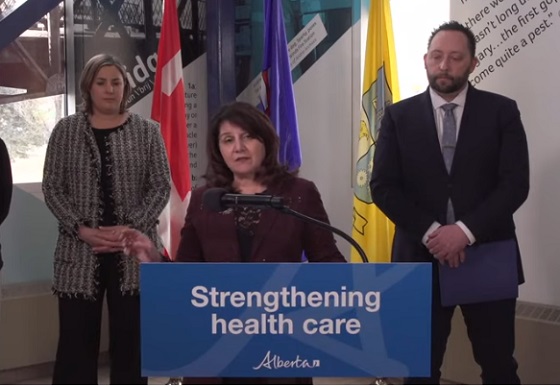
Expanding urgent care across Alberta
If passed, Budget 2025 includes $17 million in planning funds to support the development of urgent care facilities across the province.
As Alberta’s population grows, so does the demand for health care. In response, the government is making significant investments to ensure every Albertan has access to high-quality care close to home. Currently, more than 35 per cent of emergency department visits are for non-life-threatening conditions that could be treated at urgent care centres. By expanding these centres, Alberta’s government is enhancing the health care system and improving access to timely care.
If passed, Budget 2025 includes $15 million to support plans for eight new urgent care centres and an additional $2 million in planning funds for an integrated primary and urgent care facility in Airdrie. These investments will help redirect up to 200,000 lower-acuity emergency department visits annually, freeing up capacity for life-threatening cases, reducing wait times and improving access to care for Albertans.
“More people are choosing to call Alberta home, which is why we are taking action to build capacity across the health care system. Urgent care centres help bridge the gap between primary care and emergency departments, providing timely care for non-life-threatening conditions.”
“Our team at Infrastructure is fully committed to leading the important task of planning these eight new urgent care facilities across the province. Investments into facilities like these help strengthen our communities by alleviating strains on emergency departments and enhance access to care. I am looking forward to the important work ahead.”
The locations for the eight new urgent care centres were selected based on current and projected increases in demand for lower-acuity care at emergency departments. The new facilities will be in west Edmonton, south Edmonton, Westview (Stony Plain/Spruce Grove), east Calgary, Lethbridge, Medicine Hat, Cold Lake and Fort McMurray.
“Too many Albertans, especially those living in rural communities, are travelling significant distances to receive care. Advancing plans for new urgent care centres will build capacity across the health care system.”
“Additional urgent care centres across Alberta will give Albertans more options for accessing the right level of care when it’s needed. This is a necessary and substantial investment that will eventually ease some of the pressures on our emergency departments.”
The remaining $2 million will support planning for One Health Airdrie’s integrated primary and urgent care facility. The operating model, approved last fall, will see One Health Airdrie as the primary care operator, while urgent care services will be publicly funded and operated by a provider selected through a competitive process.
“Our new Airdrie facility, offering integrated primary and urgent care, will provide same-day access to approximately 30,000 primary care patients and increase urgent care capacity by around 200 per cent, benefiting the entire community and surrounding areas. We are very excited.”
Alberta’s government will continue to make smart, strategic investments in health facilities to support the delivery of publicly funded health programs and services to ensure Albertans have access to the care they need, when and where they need it.
Budget 2025 is meeting the challenge faced by Alberta with continued investments in education and health, lower taxes for families and a focus on the economy.
Quick facts
- The $2 million in planning funds for One Health Airdrie are part of a total $24-million investment to advance planning on several health capital initiatives across the province through Budget 2025.
- Alberta’s population is growing, and visits to emergency departments are projected to increase by 27 per cent by 2038.
- Last year, Alberta’s government provided $8.4 million for renovations to the existing Airdrie Community Health Centre.
Related information
Alberta
Province pumping $100 million into Collegiates and Dual-Credit hands-on learning programs
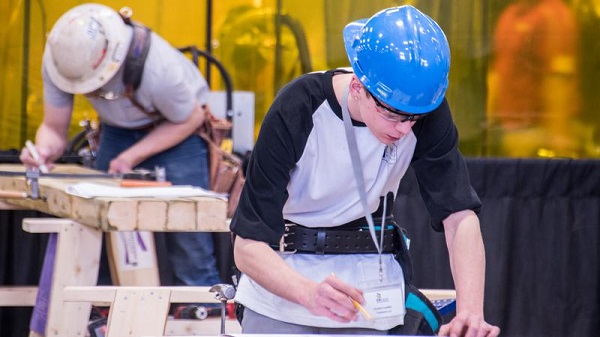
Alberta’s government is helping students discover their skills and interests today, to help them find careers for tomorrow.
If passed, Budget 2025 will provide more than $100 million over three years for school boards to grow career education programs, including funding for more collegiate and dual-credit programs across Alberta.
“We are working to set students up for success by strengthening job-focused education. This money is helping schools partner with businesses, universities and colleges to create programs that will help students hit the ground running after they graduate.”
Career education helps students gain credits towards graduation while earning hands-on experience in fields like the trades, computer programming, health care, agriculture, culinary arts and more. These career education programs support a strong economy by helping students learn the skills they need to get in-demand jobs.
Collegiate schools
Collegiate schools work with businesses, universities and colleges to offer classes that give students pathways to education and careers in the job of their choice. There are 12 collegiate schools in Alberta, offering many different types of programming for grades 7-12, including aviation, graphic design, trades and more.
If passed, Budget 2025 provides more than $21 million to school boards to help fund special classrooms like carpentry workshops, film and media rooms, science laboratories, heavy equipment simulators and aircraft hangars. Another $6 million is being invested to support the start-up costs for new collegiate schools.
Dual-credit programs
Budget 2025, if passed, also provides $4.6 million in 2025/26 to start new or improve existing dual-credit programs. In partnership with universities and colleges, dual-credit programs give students a head start on rewarding careers by allowing them to earn high-school and post-secondary credits at the same time. Of the $4.6 million, $550,000 is being provided by Alberta Seniors, Community and Social Services for new and improved dual-credit health care aide programs.
“Health care aides play a critical role in ensuring Albertans receive the continuing care services they need to maintain their health, independence and quality of life. Our investments into career pathways for health care aides will provide opportunities for young Albertans to develop the skills they need to build a rewarding career in Alberta’s continuing care workforce.”
Another $1.4 million is being invested to support students participating in off-campus career education programs through CAREERS. This non-profit connects students to jobs in high-demand fields, such as the trades, technology, health, forestry and agriculture.
“Investments in collegiate and dual-credit programming are significant for Calgary Catholic as they further strengthen our collegiate and dual-credit programming. This programming will open opportunities for our students and help them to realize their full potential.”
“Before Fusion Collegiate, I felt lost and wasn’t really sure what to do after high school. Thanks to its career-focused learning and the opportunities through Fusion and The Educational Partnership Foundation, I’m now working as a first-year apprentice plumber with Mr. Rooter. The hands-on trades training, high school credits, safety certifications, and real-world skills I picked up completely changed my life. I’m excited about where my career is headed and really thankful for the support that helped me get here.”
Budget 2025 is meeting the challenge faced by Alberta communities with continued investments in education and health, lower taxes for families and a focus on the economy.
Quick facts
- If passed, Budget 2025 invests $102.4 million over three years to provide sustainable, predictable career education funding, and to increase access to career education for Alberta students.
- This includes $8.4 million over 2026-27 and 2027-28 to raise awareness among students and families of career education programs and pathways available to Alberta students.
- Career education in Alberta includes career and technology courses, Career and Life Management (CALM), dual-credit courses, collegiate schools, apprenticeships and off-campus education programming.
- Since 2013, more than 95,000 high school students participated in at least one dual–credit course.
- In spring 2025, Alberta Education will engage with education partners on best practices to bring more career education opportunities to students.
- Since 2022, education partners and almost 5,000 Albertans have provided their feedback on career education and workforce needs.
Related information
-
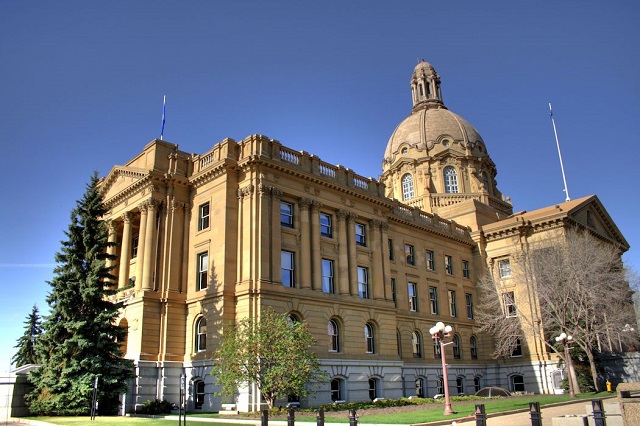
 Alberta1 day ago
Alberta1 day agoAlberta Institute urging Premier Smith to follow Saskatchewan and drop Industrial Carbon Tax
-

 Addictions1 day ago
Addictions1 day agoShould fentanyl dealers face manslaughter charges for fatal overdoses?
-

 2025 Federal Election1 day ago
2025 Federal Election1 day agoFool Me Once: The Cost of Carney–Trudeau Tax Games
-
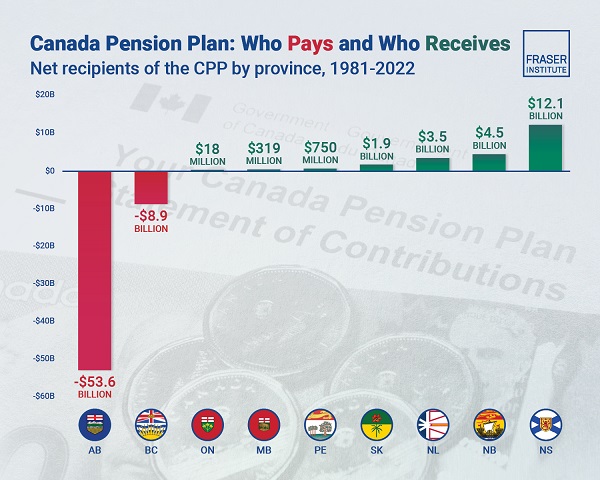
 Alberta1 day ago
Alberta1 day agoAlbertans have contributed $53.6 billion to the retirement of Canadians in other provinces
-

 Automotive2 days ago
Automotive2 days agoTrump announces 25% tariff on foreign automobiles as reciprocal tariffs loom
-

 2025 Federal Election1 day ago
2025 Federal Election1 day agoChinese Gangs Dominate Canada: Why Will Voters Give Liberals Another Term?
-

 Energy1 day ago
Energy1 day agoEnergy, climate, and economics — A smarter path for Canada
-

 Business22 hours ago
Business22 hours agoFeds Spent Roughly $1 Billion To Conduct Survey That Could’ve Been Done For $10,000, Musk Says




